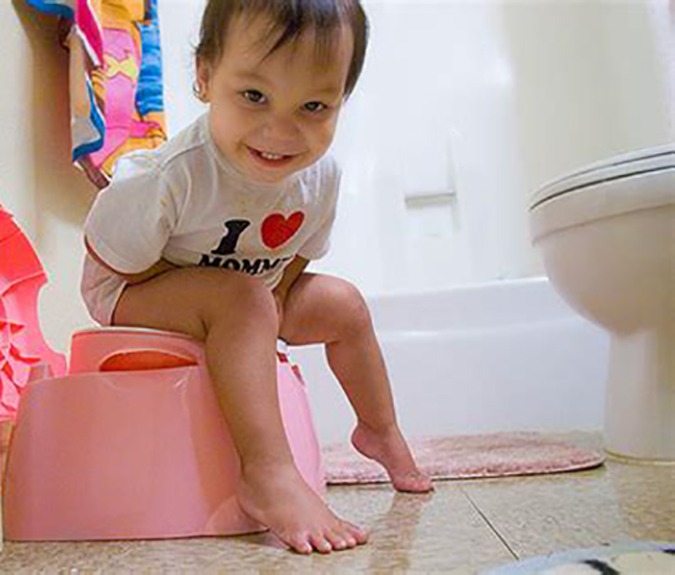Being potty trained is a big accomplishment for children and an even bigger relief for parents. But learning to go to the bathroom like a big girl or boy is harder for some children than others. Check out some of these tips, tricks, and hints that will hopefully make accomplishing this milestone a little easier.
- Make going potty fun. Put a few drops of food coloring in the toilet, so when your child uses the potty, the color changes.
- Let them pick their own underwear. Little ones are more reluctant to soil panties or briefs they really like.
- Almost every public toilet has an automatic toilet which can be surprising and scary to a child. Bring some post-it notes with you to the restrooms and cover the sensor before your little one goes. Remove the post-it and flush the toilet as normal.
- Make a big deal out of a successful potty. Tell them what a great job they did and how much of a big girl/boy they are now.
- Consider where your child goes potty. Most parents will put the potty in the bathroom (if they have one at all), and it’s not always easy to make it there in time when your child is ready to go. Start by keeping the potty in the room they are in, then slowly ease it closer and closer to the bathroom.
- It’s important to remember that every child is ready to potty train at different ages, especially since being able to control their urge to go is just as much physical as it is mental. While your child develops the ability to “hold it,” begin potty training with very frequent and consistent visits to the restroom. You can start out with going to the restroom every 10-15 minutes and work your way up from there over a couple of days. The key to this working is to keep the visits as close to the time limit as possible, even if you are out and about, if you set the time for a bathroom break at 10 minutes you need to head to the toilet when that time arrives.
- Be sympathetic. Sometimes potty training is frustrating for parents, especially when you think the child is completely trained and they have an accident, or if they flat out refuse to go on the toilet. Remember, you’ve probably never met an adult (without a disability) who still wears diapers, so you know you child will eventually get it. Also, see if you can get to the bottom of why they don’t want to use the potty. Maybe they are afraid and need you to explain that there is nothing to be afraid of.
- If your child struggles with sitting on a regular toilet, try having them sit on it backwards with their legs facing the tank. This gives them a view of what’s happening and make them feel less like they are going to fall in.
- Not every child is able to master a regular toilet right away. Start them out with a potty made for them, then move onto a cover that goes on the toilet, graduating to the regular toilet.
- Do something special while they try to go to make potty time special. Grab some books to read or let them watch a little of their favorite show
- A lot of parents struggle to recognize when their child is ready to start potty training. Some things to look for are: They are walking steadily on their own, they want to be changed right after going in their diaper, they can pull their own pants down, they are dry for a minimum of two hours, they are beginning to show an interest in what goes on in the bathroom, their bowel movements are at predictable times and are mostly solid, they are able to communicate with you that they need to go by (this can be verbal or physical such as by squatting).
- Reward your child. Candy works very well here because it can be carried with you and children do well with immediate gratification. Begin by giving them a piece of candy whenever they tell you they have to go potty even if they aren’t able to hold it, then only when they tell you and hold it, then when they accomplish other aspects such as being able to wipe themselves and finally when they do the entire process alone.
- If you aren’t a fan of sugary rewards, try money. Get a piggy bank and put it in your bathroom, instead of giving them a piece of candy, let them put a quarter in their piggy bank.

